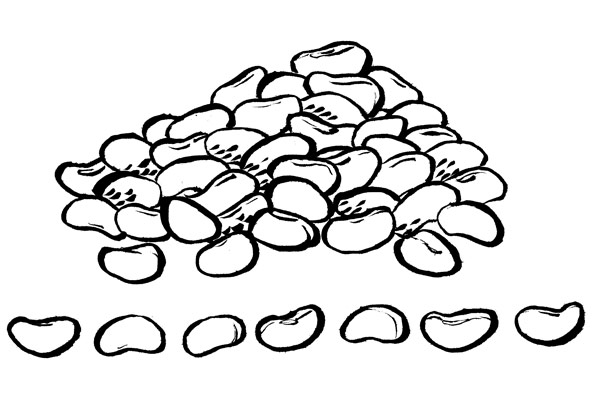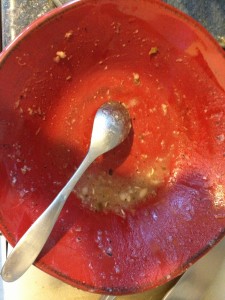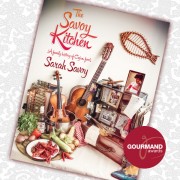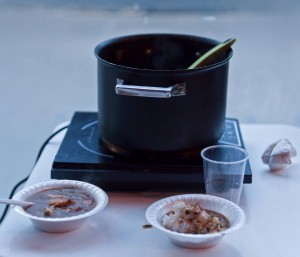
Mardi Gras means very different things to Louisianians depending on which part of the state they were raised in. To me, Mardi Gras is multi-coloured homemade costumes, wire masks, horses, rides through the country on a trailer with live music, and a big gumbo at night. The New Orleans’ Mardi Gras, on the other hand, is extravagant floats, feathered or glittery masks, brass bands, beads and doubloons, and kings and queens. It’s a similar affair throughout northern Louisiana and, sadly, much of the prairie heart of Louisiana has picked up the beads, beauty pageants, and purple (justice), green (faith), and gold (power) colours in place of our own traditional celebrations.
In 2006 my brother Joel started a traditional Mardi Gras from his house (which used to be Pops’ and is still called that). He and our childhood friends, Linzay Young and Lucious Fontenot, focus on keeping the Courir de Mardi Gras as traditional as possible: people are asked to make their costumes themselves and to wear wire masks and the traditional capuchons, then they ride around the area asking families to donate a live chicken, some sausage or some rice in exchange for dances and songs from the costumed participants. After the run, which is usually 5 or 6 miles, everyone returns to Pops’ to slaughter and clean the chickens, make a big gumbo, and dance to live bands playing on the porch all night long.
The King Cake is actually a New Orleans tradition that came over from France and has been picked up by all of Louisiana. While Cajuns do not generally hold the same significance over the cake, we do love sweet things, and this one is really very good. The recipe here is for the traditional King Cake, but it is often filled with Bavarian cream or even chocolate.
In France, the King Cake will have different trinkets inserted into it after baking: a four-leaf clover for luck, a star for fame, or even a coin for fortune. Bakeries in New Orleans often have a special coin with their logo inserted into their cakes, but the most common prize to be found in Louisiana King Cakes is a tiny plastic baby used to symbolise Jesus. You can insert different charms to represent whatever you want to offer your family and friends, or, for a more rural cake, simple insert a whole pecan or almond into the bottom of the cake. Whoever gets the charm in their slice has either luck for the year or has to supply next year’s King Cake, depending on how you want to do it. There are so many variations in this tradition that you can easily make it your own.
For the cake:
- 60g (4 tbsp) butter
- 90ml (generous 1/3 cup) milk
- 7g (1 package) dried yeast
- 450g (3 cups) plain flour
- 110g (½ cup) caster sugar
- ½ tsp nutmeg
- ¼ tsp salt
- 1 egg + 1 egg white
For the filling:
- 115g (½ cup) white granulated sugar
- 45g (¼ cup) soft brown sugar
- 1 tsp cinnamon
- ½ tsp nutmeg
- 75g (½ cup) pecans, finely chopped
- 100g (½ cup) raisins
- 30g (2 tbsp) butter, melted
For the glaze:
- 250g (2 cups) icing sugar
- ¼tsp almond extract
- ½tsp vanilla extract
- ½ tbsp cinnamon
- small pinch of salt
In a small pan, melt the butter in the milk and then leave it to cool to room temperature. Mix the yeast into 60ml (¼ cup) of warm water.
Put the flour, sugar, nutmeg and salt into a large bowl. When the yeast mixture has started to froth, pour it in, along with the milk/butter mixture and the egg. Mix well with your hands until you’ve got a rough dough, then tip it onto a floured work surface. Knead the dough, adding more flour if it’s too sticky, until it becomes smooth and elastic (10 minutes or so). Butter a large bowl and put the dough in it to prove, covered with a clean tea towel.
Mix all of the filling ingredients apart from the melted butter together in a bowl. When the dough has doubled in size (30–40 minutes), punch it down and roll it out on a floured work surface to a large rectangle about 5mm thick. Brush the surface with melted butter and sprinkle the top half of the rectangle with a thinnish layer of the filling mixture.
To make the traditional plaited ring, pick up the bottom edge of the dough and fold it over the filling. Roll it lightly, then cut it lengthwise into 3 strips. Pinch the edges of the strips if you need to stop the filling from falling out. Using a bit of water, join the 3 strips at the top and braid them loosely, pulling with your hands to stretch the strips. Use water to join the strips at the other end, then form the braid into a loop and stick both ends together. Put the cake on a sheet of baking paper on a baking tray and leave it to rise, covered with a clean teatowel, until it has doubled in size (about an hour).
Preheat the oven to 180°C (350°F). Whisk the egg white with a tablespoon of water, and brush this over the risen cake. Bake the cake for 25 minutes or until it’s golden brown, then let it cool on a wire rack for 30 minutes.
Now make the icing: put the icing sugar and salt in a large mixing bowl and, using a hand mixer at low speed, slowly pour in 50ml (3½ tbsp) water. Add the almond and vanilla extracts and the cinnamon and keep mixing until the glaze is smooth and creamy. Drizzle this over the cake, leave it to set, and then sprinkle with coloured sugar –this is very easy to make at home by mixing a small bit of food colouring with white granulated sugar. Traditionally, purple, green, and gold sugar is used in sections on the cake(as a child I always wanted only the purple pieces).
If you’re using charms or a plastic baby, gently lift the cake and make a small incision with a sharp knife halfway into the cake from the bottom. Insert the charm and coerce the cake back around it to close.
Serves 10
Notes: While cinnamon, sugar, and raisins make up the most traditional filling, there are many options. Feel free to experiment according to your owns tastes. Some other fillings I’ve used and enjoyed were Nutella (I just piped a thick cord of it across each strip of dough before folding them closed and braiding) and a mix of cream cheese, egg, rum, brown sugar and cinnamon.
Alternatively, you can make a very simple royal icing using one egg white and about 125g (1 cup) of icing sugar, with a bit of lemon juice or vanilla mixed in. Glaze the cake with the white royal icing, then decorate it with coloured sugar, or you could make purple, green and gold icing and use that. Just a note if you want to do it this way—let the white icing dry before adding a colour, then let each colour dry before you add another. Otherwise they all run together and ruin the effect.
Buy The Savoy Kitchen – A Family History of Cajun Food by Sarah Savoy here.
![]() This roast pork recipe from Fish, Wings & Tings makes a fantastic Sunday lunch or centrepiece for a family party. Very simple but packed with flavour, it’ll become a firm favourite in no time.
This roast pork recipe from Fish, Wings & Tings makes a fantastic Sunday lunch or centrepiece for a family party. Very simple but packed with flavour, it’ll become a firm favourite in no time. 



















